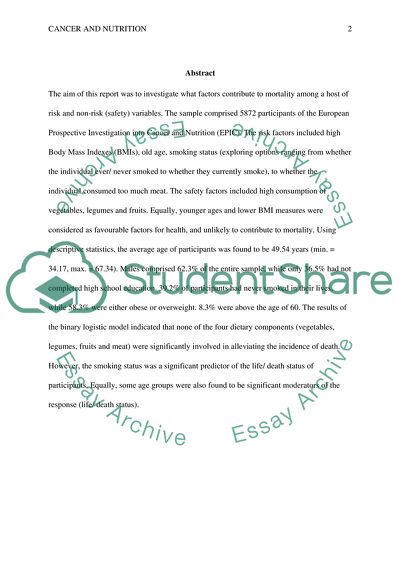Cite this document
(Risk Factors for Mortality among Participants of the European Statistics Project Example | Topics and Well Written Essays - 3000 words, n.d.)
Risk Factors for Mortality among Participants of the European Statistics Project Example | Topics and Well Written Essays - 3000 words. https://studentshare.org/statistics/1854683-to-investigate-the-risk-factors-for-mortality-among-participants-of-the-european-prospective-investigation-into-cancer-and-nutrition
Risk Factors for Mortality among Participants of the European Statistics Project Example | Topics and Well Written Essays - 3000 words. https://studentshare.org/statistics/1854683-to-investigate-the-risk-factors-for-mortality-among-participants-of-the-european-prospective-investigation-into-cancer-and-nutrition
(Risk Factors for Mortality Among Participants of the European Statistics Project Example | Topics and Well Written Essays - 3000 Words)
Risk Factors for Mortality Among Participants of the European Statistics Project Example | Topics and Well Written Essays - 3000 Words. https://studentshare.org/statistics/1854683-to-investigate-the-risk-factors-for-mortality-among-participants-of-the-european-prospective-investigation-into-cancer-and-nutrition.
Risk Factors for Mortality Among Participants of the European Statistics Project Example | Topics and Well Written Essays - 3000 Words. https://studentshare.org/statistics/1854683-to-investigate-the-risk-factors-for-mortality-among-participants-of-the-european-prospective-investigation-into-cancer-and-nutrition.
“Risk Factors for Mortality Among Participants of the European Statistics Project Example | Topics and Well Written Essays - 3000 Words”. https://studentshare.org/statistics/1854683-to-investigate-the-risk-factors-for-mortality-among-participants-of-the-european-prospective-investigation-into-cancer-and-nutrition.


